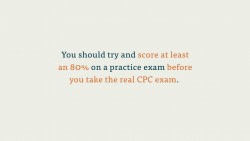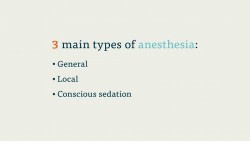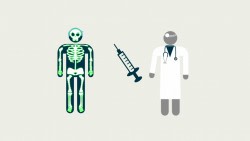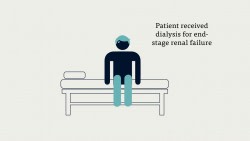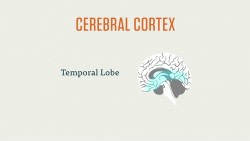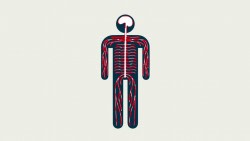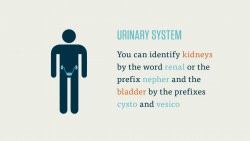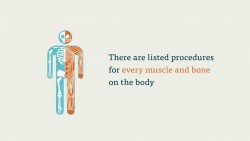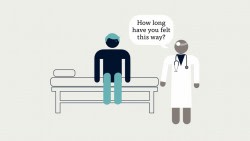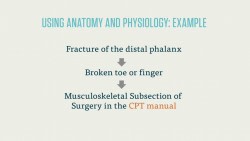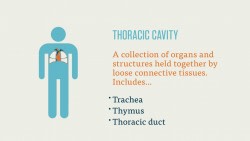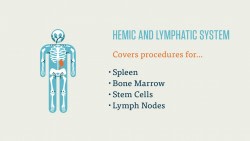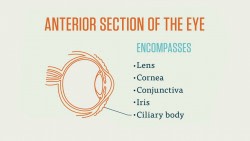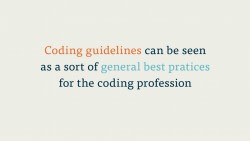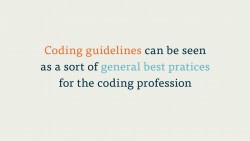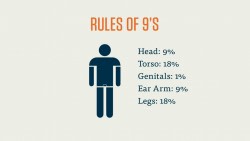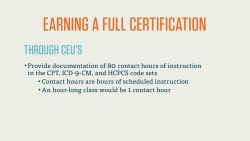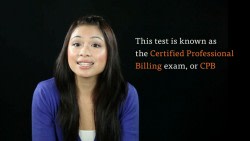The AAPC has a number of preparation materials for the Certified Professional Coding (CPC) exam. These are available through the AAPC’s website, but they’re fairly expensive.
You’ll learn everything you need to pass the CPC exam in a coding course at a university or community college. You should only purchase the AAPC’s training materials if you’re very far out of practice.
You should, however, consider taking the AAPC’s CPC practice exams. We’ll cover these in a little bit.
Prep Strategies
Since the CPC exam covers so many topics, it’s easy to get overwhelmed in the preparation stages. Here are a couple ways of to cope with this large, intimidating exam.
During the exam, you’ll spend the most time with the CPT manual. While there are some questions on ICD-10-CM codes and HCPCS, there are far more questions that relate to the CPT code set, so it’s good to focus your study efforts there. Know the manual back to front, and be comfortable navigating it and using its numerous appendices.
Most people take the exam only after they’ve been working in coding for a little while (to be certified, the CPC requires a passing score and two years of professional experience, or the educational equivalent). If you’ve amassed that experience, you should be relatively familiar with medical terminology and anatomy and physiology. Still, it’s a very good idea to brush up with this through flash cards or review courses.
There will be questions on the exam that explicitly reference medical or anatomical terminology (questions like, “What kind of joint is this?”), but having a strong medical vocabulary will help you in deciphering other questions as well.
Once you’ve studied up, be sure to take advantage of as many practice exams as you can. Treat these exams like real tests: study extensively for them, time yourself as you take them, and then note which questions, and more importantly what type of questions, you regularly get wrong. On your first test, did you struggle with the Anesthesia codes? Go back over that section. Were you sloppy with your ICD-10-CM codes? Review the ICD-10-CM manual. A number of private companies have practice CPC exams, but the AAPC’s practice exams are probably your best bet.
Don’t treat practice exams as formalities or wastes of time. Many practice exams can be easier than the actual exam, but you should still take them seriously. You should try and score at least an 80% on a practice exam before you take the real CPC exam.
Taking the Test
When you take the CPC exam, you’re allowed to bring in each of the code manuals (the ICD, CPT, and HCPCS manuals). You’re allowed to have notes in the margins of these manuals, but these notes can’t contain any test-specific information. You are also not allowed to tape anything into these manuals.
It’s a good idea to mark the important or frequently used sections of your code manuals. The CPT manual, for instance, comes with a number of tabs you can place in the book to mark certain important places. Use these to mark off where code sections begin (like the Surgery or Medicine sections in the CPT manual), and where to find certain appendices.
When you’re taking the CPC exam, you’ll be asked to perform though you were coding at your regular coding job, so set up your manual in the way that makes the most sense for you.
Also be aware that each manual has loads of helpful information beyond the codes. The CPT manual has a number of diagrams of the human body, including illustrations of the ocular system and adnexa, the musculoskeletal system, the nervous system and much more. Mark these pages and refer to them during the test if you’re stumped on a question pertaining to anatomical terminology.
Time Management
When you’re taking a test like the CPC exam, which is almost six hours long and consists of 150 questions, it’s a good idea to break things down to make them more manageable. Separate the questions into blocks of time, and work on one block of questions for a fixed amount of time before moving on to the next set.
For example, you can divide the CPC exam into five groups of 30 questions. Take one hour for every thirty questions. Or you could try and take on 10 questions every 20 minutes. As soon as your designated block of time is up, skip to the next block of questions. That is, if you’ve divided the test into five, hour-long blocks of 30 questions, and you are on question 25 after the first hour elapses, just skip ahead to question 31. If you finish a block of questions early, go back and fill in questions you skipped.
In a test as long as the CPC, it’s important to keep your momentum as you take the test. You don’t want to spend too much time on any one questions. Make it your goal to read and, if possible, answer every question on the test.
It’s a good idea to bring a timer to the exam. This can be a kitchen timer or a watch. Just make sure you don’t have a distracting alarm set on it, and you should be fine. (Your proctor won’t let you use your cell phone, for obvious reasons).
Know Your Goals
In order to pass the CPC exam, you need to get a 70% or better on the test. Always keep that in mind when you’re taking the test. The long, multi-part questions that might have you look up three, four, or five codes are worth the same as the general knowledge questions. If you’re stuck on a question, don’t be afraid to skip it and come back to it later.
Another good way of managing your goals and your time is to remember that your objective in the test is to pick the best available answer. This test is not an exact duplication of what you’ll see in everyday coding. These are hypothetical situations that may be shortened or simplified for space, so you’ll waste precious time getting lost in the details of each questions. Pick the best possible answer and move on.
Remember as you take the test that you can get 45 questions wrong. Don’t waste a lot of time on a question that’s totally stumping you. Instead, move on and try and regain your momentum with easier, less time-intensive questions. If you’ve got extra time, go back to the more difficult questions after you’ve completed the easier questions.


